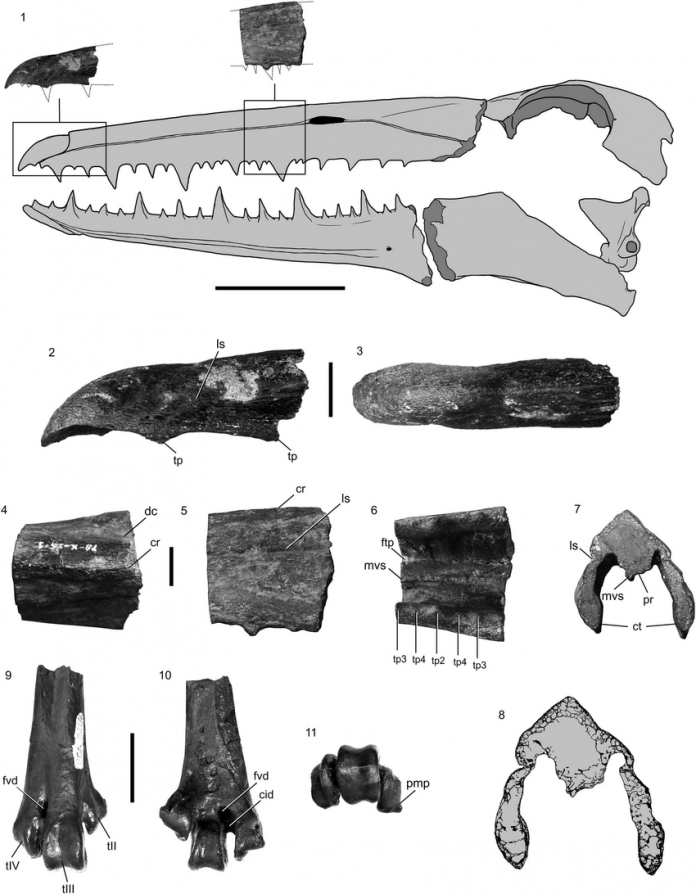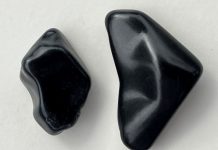
By Jim Brace-Thompson
When we think of major fossil discoveries, we think of a dashing Roy Chapman Andrews leading a field expedition in remote deserts like the Gobi. In an “aha!” moment, dirt is whisked away with a brush, and bones of a spectacular creature suddenly come to light. In point of fact, many major discoveries actually emerge from dusty shelves and drawers of cramped museum storage rooms where fossils were shoved after being discovered but were never fully examined or appreciated. Such is the case of one big bird.
National Public Radio’s Science Friday recently featured an interview with Peter A. Kloess, a doctoral candidate at the University of California, Berkeley, where he studies the evolution of feeding in beaked birds and turtles. His investigations led him to a drawer holding a small fragment of a jaw that apparently sat untended for years. It was a so-called pelagornithid retrieved from 50-million-year-old Eocene sediments in Antarctica. Kloess and two colleagues have reconstructed it as a giant albatross-like bird from a family that ruled the skies all around the globe between 62 million and 2.5 million years ago.
While described as albatross-like because of their apparent mode of life cruising skies above the high seas, pelagornithids were actually more closely related to ducks and chickens. One thing catching Kloess’s attention were its teeth, or rather its “pseudoteeth” of bony projections sprouting from the beak. But that’s not the only oddity. The first pelagornithid appears in the fossil record shortly after the nonavian dinosaurs went extinct. It was only about the size of a seagull. Within a relatively short 12 million years, pelagornithids had evolved to immense sizes not seen in any other birds. How big? Wingspan is estimated at some 20 feet, or twice the size of today’s albatross.
And to think this whole study emerged from a couple bits of bone tucked away in the back rooms of the University of California Museum of Paleontology for some three decades! In addition to Kloess, two other paleontologists—Ashley Poust (San Diego Natural History Museum) and Thomas Stidham (Institute of Vertebrate Paleontology and Paleoanthropology, Beijing, China)—had visited the storage room and had been captivated by the bone bits that are now finally giving scientists a long overdue “aha!” moment.
Author: Jim Brace-Thompson
 Jim began and oversees the AFMS Badge Program for kids, has been inducted into the National Rockhound & Lapidary Hall of Fame within their Education Category, and is the president-elect for the American Federation of Mineralogical Societies.
Jim began and oversees the AFMS Badge Program for kids, has been inducted into the National Rockhound & Lapidary Hall of Fame within their Education Category, and is the president-elect for the American Federation of Mineralogical Societies.
Contact him at jbraceth@roadrunner.com.
If you enjoyed what you’ve read here we invite you to consider signing up for the FREE Rock & Gem weekly newsletter. Learn more>>>
In addition, we invite you to consider subscribing to Rock & Gem magazine. The cost for a one-year U.S. subscription (12 issues) is $29.95. Learn more >>>


 Hide i
Hide i











